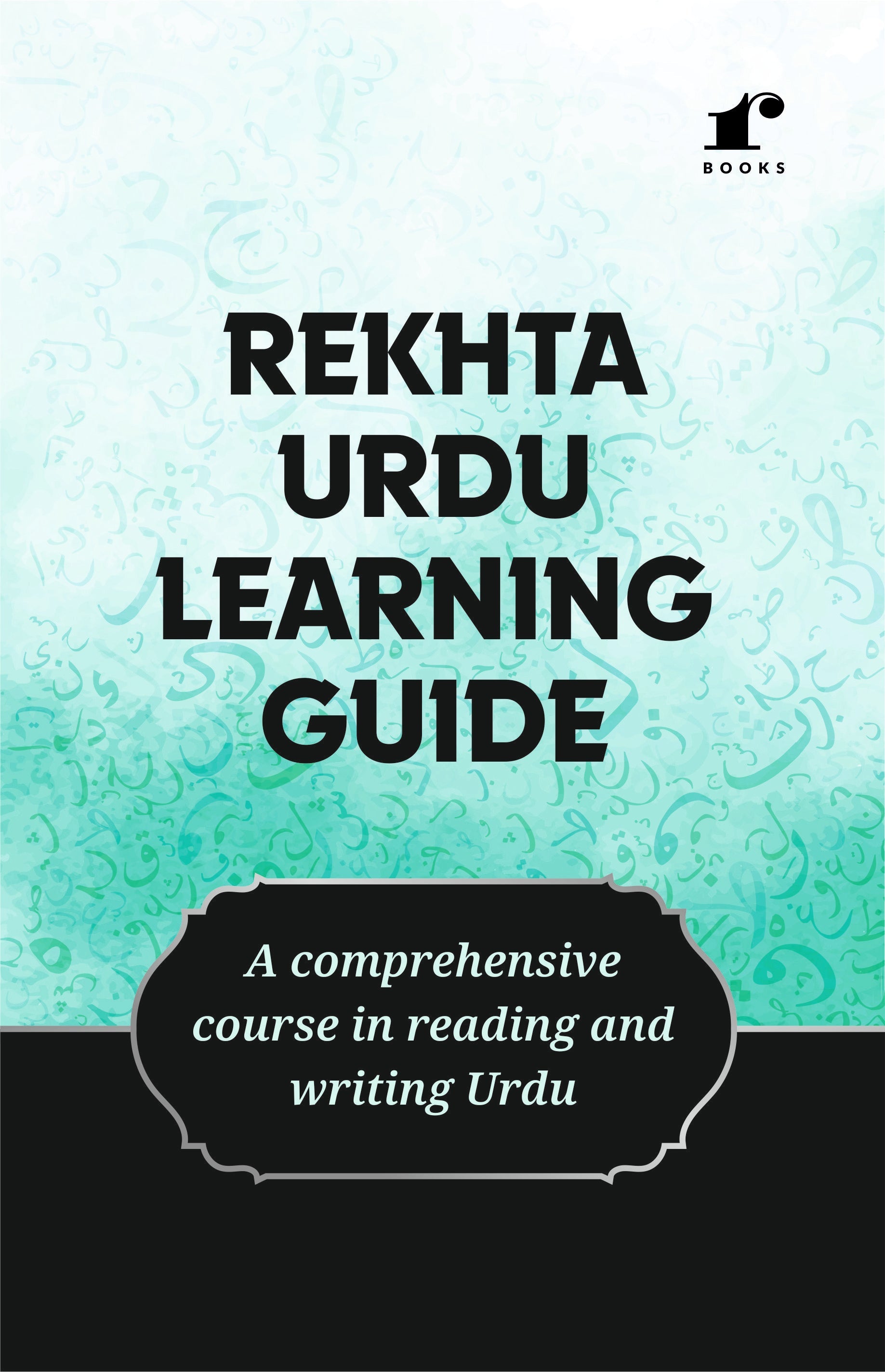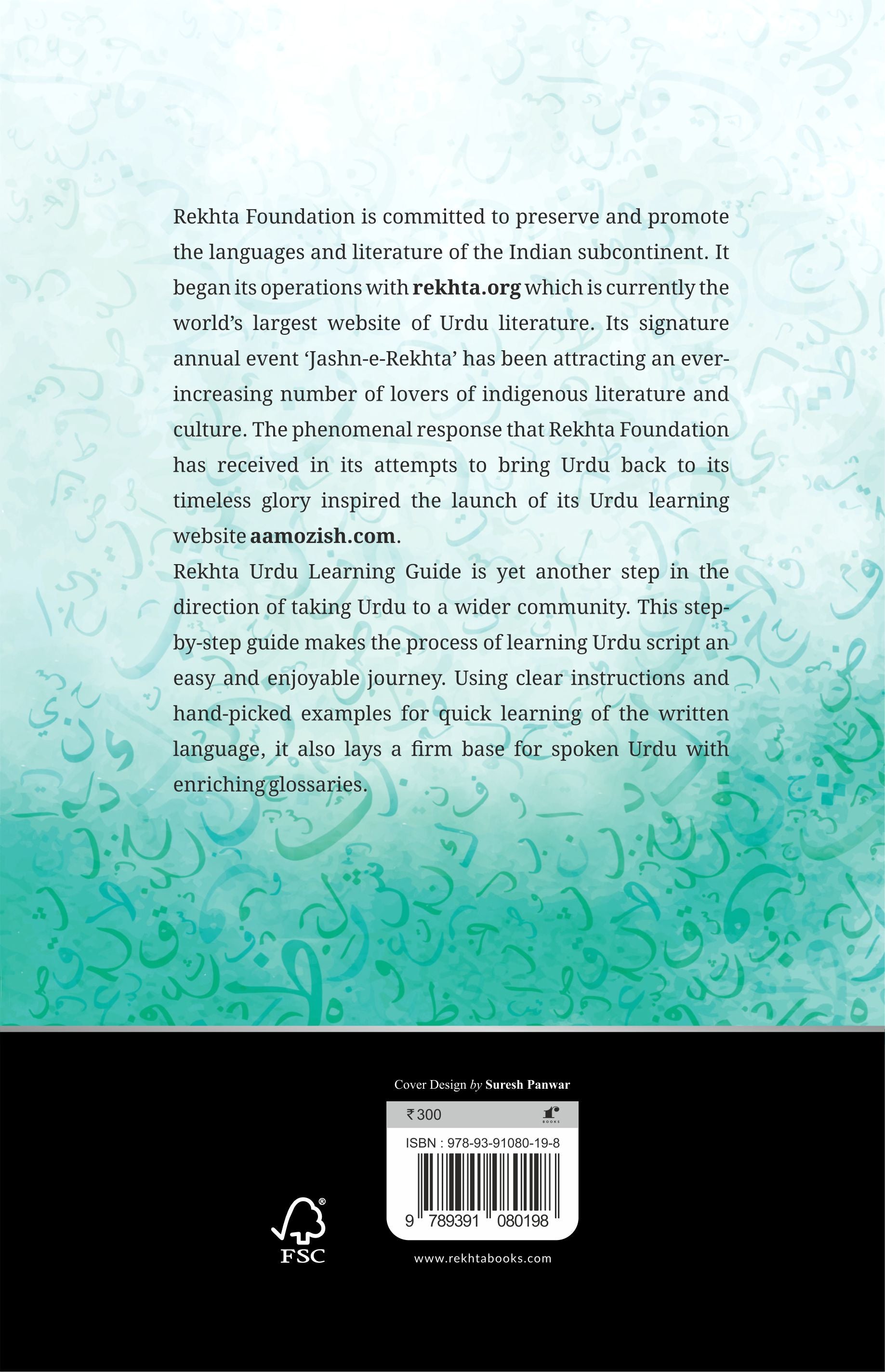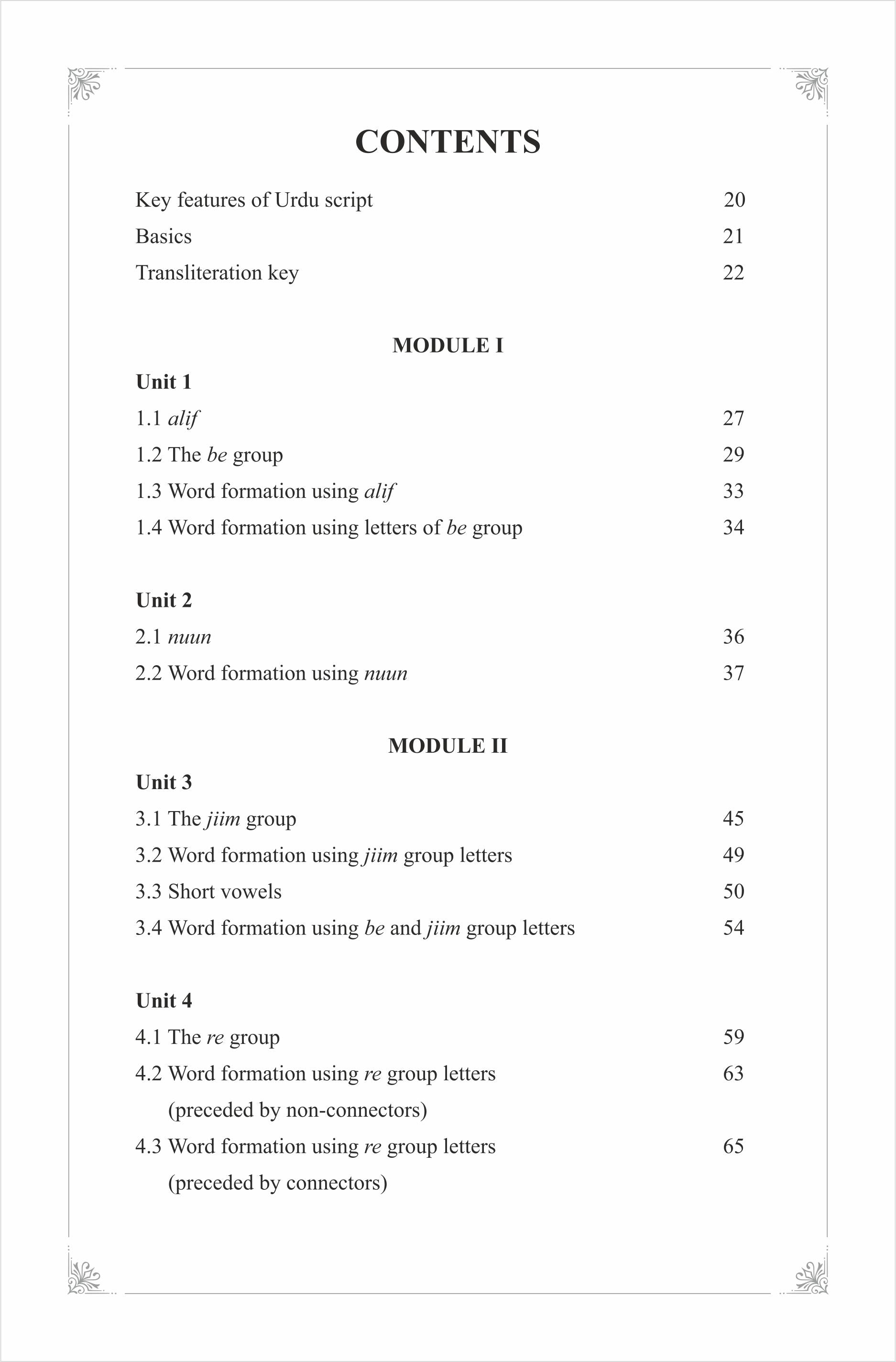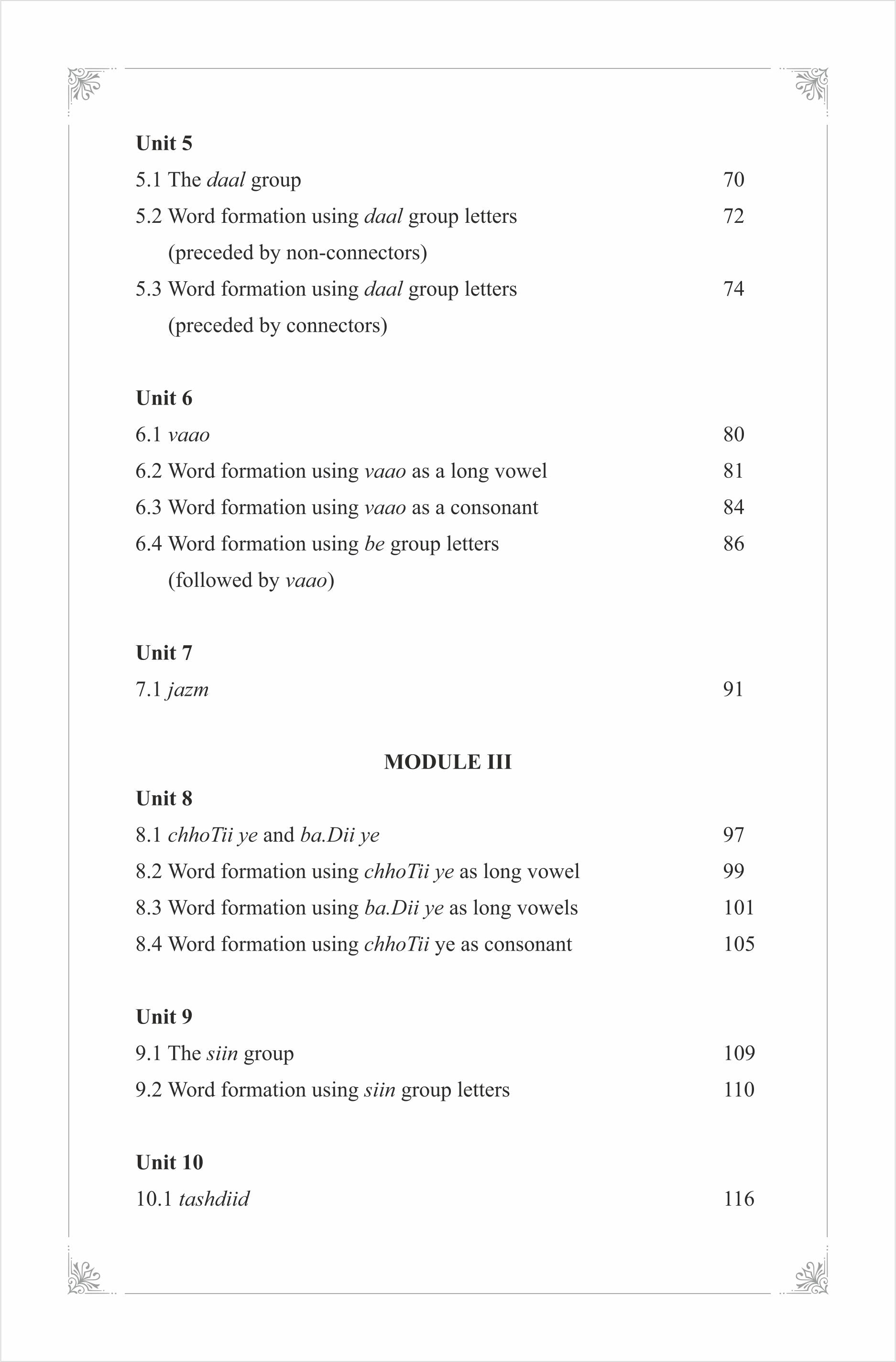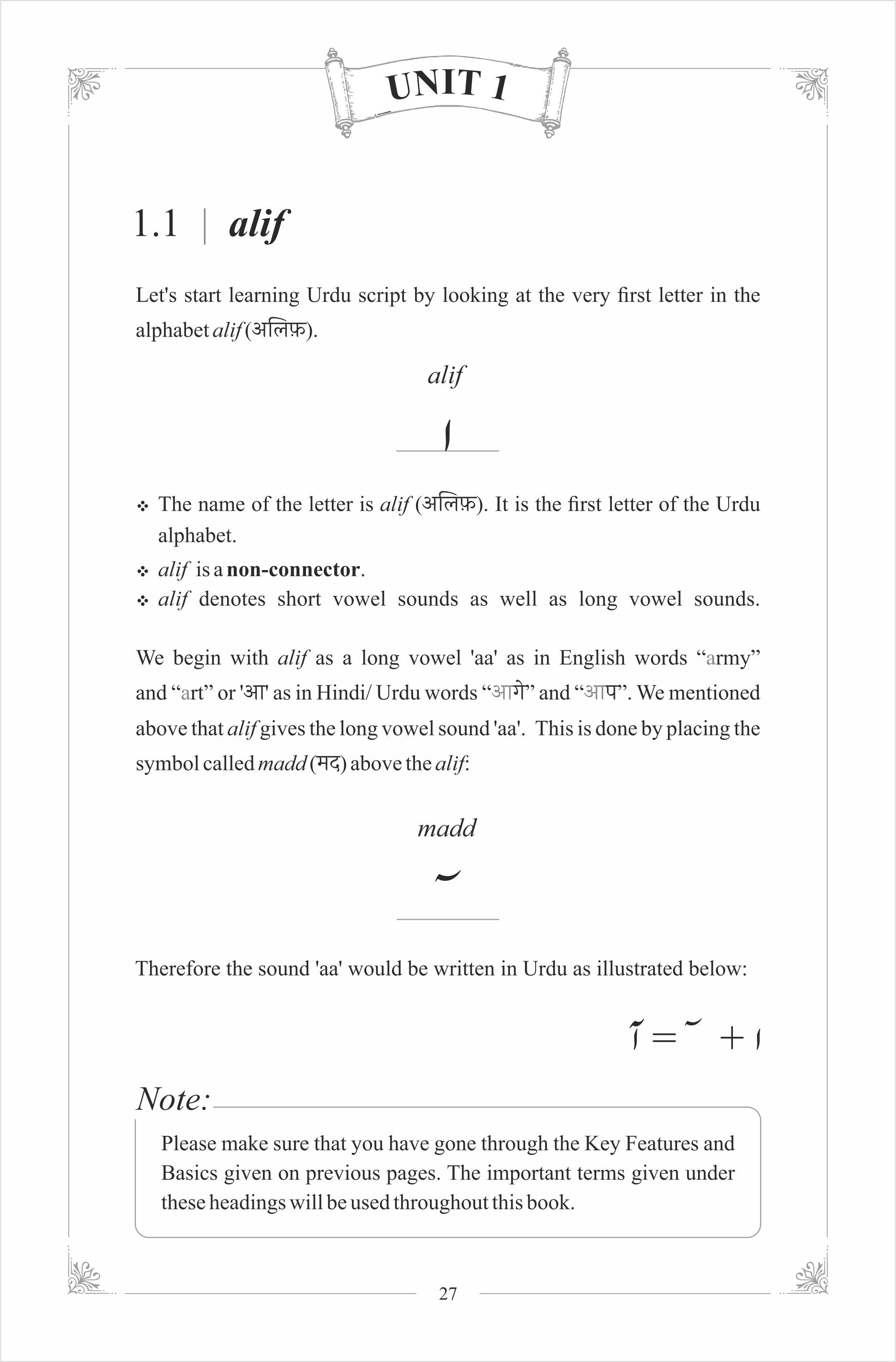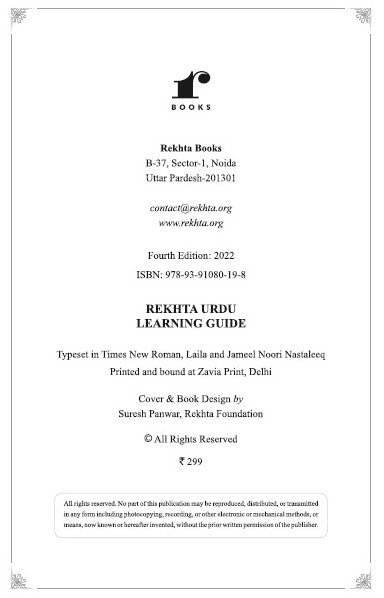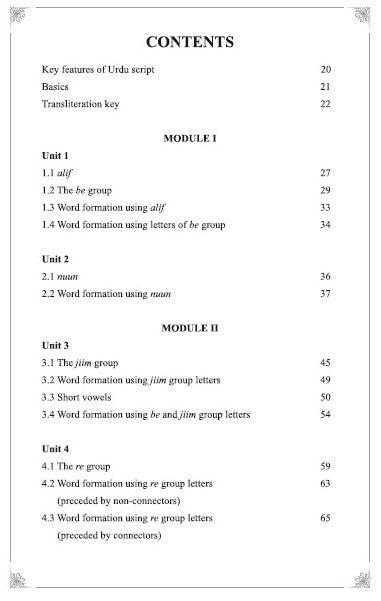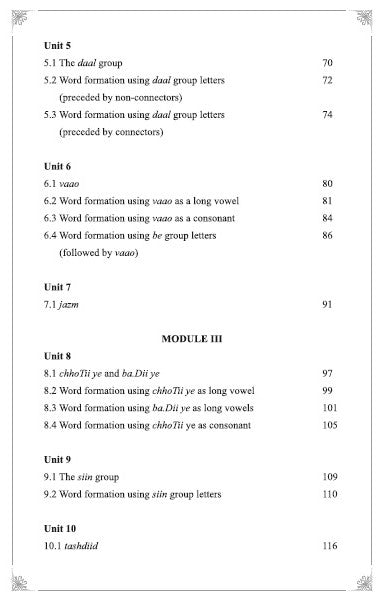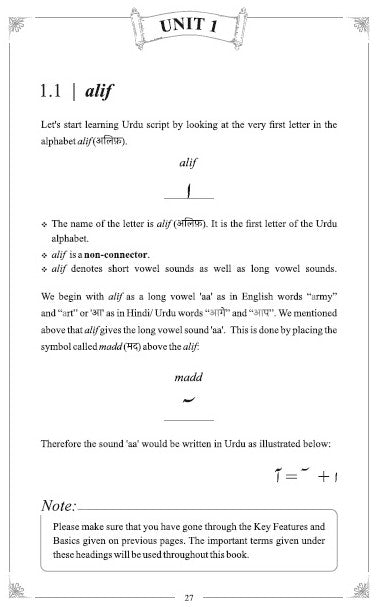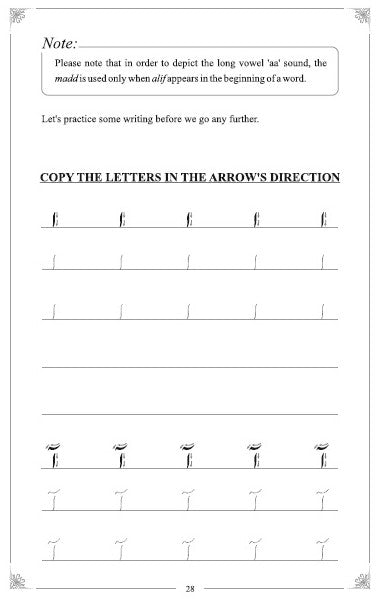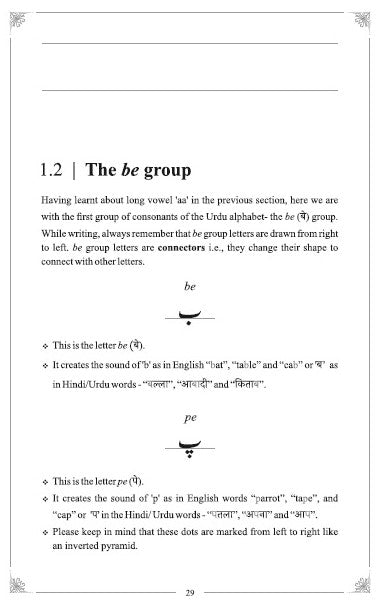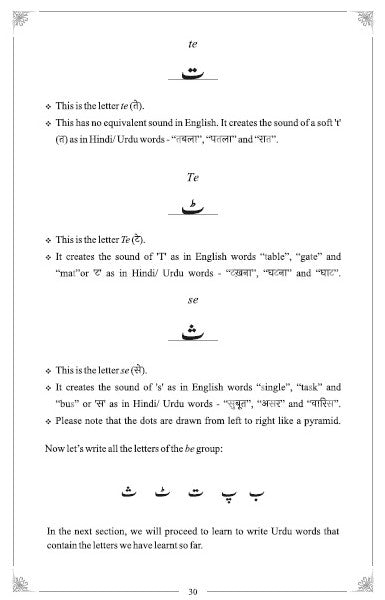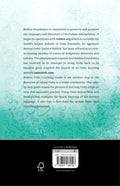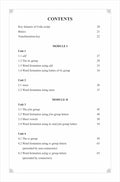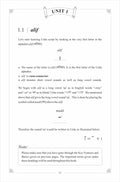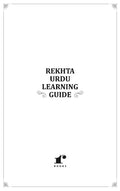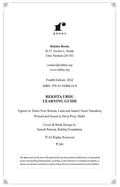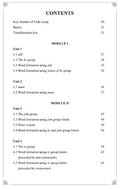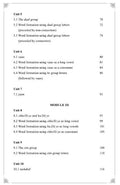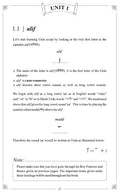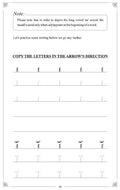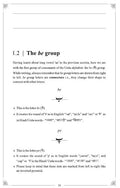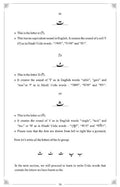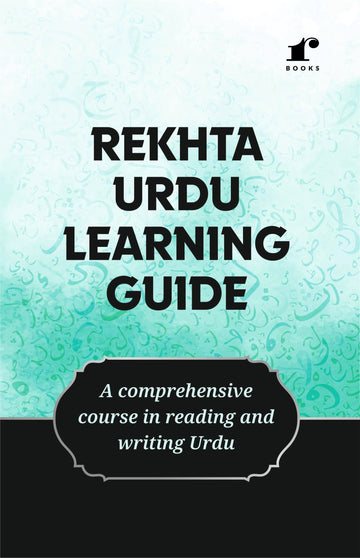CONTENTS
Key Features of Urdu Script...................20
Basics............................................21
Transliteration Key.........................22
MODULE I
Unit 1
1.1 Alif.................................................27
1.2 The Be Group..............................29
1.3 Word Formation Using Alif..........33
1.4 Word Formation Using Letters of Be Group...34
Unit 2
2.1 Muun............................................36
2.2 Word Formation Using Nuun......37
MODULE II
Unit 3
3.1 The Jim Group............................45
3.2 Word Formation Using Jim Group Letters...49
3.3 Short Vowels..............................50
3.4 Word Formation Using Be and Jim Group Letters...54
Unit 4
4.1 The Re Group.............................59
4.2 Word Formation Using Re Group Letters (Preceded by Non-Connectors)...63
4.3 Word Formation Using Re Group Letters (Preceded by Connectors)...65
Unit 5
5.1 The Daal Group............................70
5.2 Word Formation Using Daal Group Letters (Preceded by Non-Connectors)...72
5.3 Word Formation Using Daal Group Letters (Preceded by Connectors)...74
Unit 6
6.1 Vaao..................................................80
6.2 Word Formation Using Vaao as a Long Vowel...81
6.3 Word Formation Using Vaao as a Consonant...84
6.4 Word Formation Using Be Group Letters (Followed by Vaao)...86
Unit 7
7.1 Jazm................................................91
MODULE IV
Unit 8
8.1 ChhoTii Ye and Ba.Dii Ye..........97
8.2 Word Formation Using ChhoTii Ye as Long Vowel...99
8.3 Word Formation Using Ba.Dii Ye as Long Vowels...101
8.4 Word Formation Using ChhoTii Ye as Consonant...105
Unit 9
9.1 The Siin Group.............................109
9.2 Word Formation Using Siin Group Letters...110
Unit 10
10.1 Tashdiid.......................................116
Unit 1
1.1 | Alif
Let's start learning the Urdu script by looking at the very first letter in the alphabet: alif (ا).
Alif
The name of the letter is alif (ا). It is the first letter of the Urdu alphabet.
Alif is a non-connector.
Alif denotes short vowel sounds as well as long vowel sounds.
We begin with alif as a long vowel 'aa', as in English words "army" and "art," or 'आ' as in Hindi/Urdu words "साल" (year) and "क़लाम" (pen).
As mentioned above, alif gives the long vowel sound 'aa'. This is done by placing the symbol called madd (ٓ) above the alif.
Madd
Therefore, the sound 'aa' would be written in Urdu as illustrated below:
آ = ا + ٓ
Note:
Please make sure that you have gone through the **Key Features** and **Basics** given on previous pages. The important terms given under these headings will be used throughout this book.
1.2 | The Be Group
Having learned about the long vowel 'aa' in the previous section, here we are with the first group of consonants in the Urdu alphabet - the **be (ب)** group. While writing, always remember that be group letters are drawn from right to left. Be group letters are connectors, meaning they change their shape to connect with other letters.
Be (ب)
This is the letter be (ب).
It creates the sound of 'b' as in English "bat," "table," and "cab" or as in Hindi/Urdu words "بال" (hair), "رب" (Lord), and "لب" (lip).
Pe (پ)
This is the letter pe (پ).
It creates the sound of 'p' as in English words "parrot," "tape," and "cap" or in the Hindi/Urdu words "پَر" (feather), "پھول" (flower), and "پانی" (water).
Please keep in mind that these dots are marked from left to right like an inverted pyramid.
Te (ت)
This is the letter te (ت).
It has no equivalent sound in English. It creates the sound of a soft 't' (ت) as in Hindi/Urdu words "تتلی" (butterfly), "تالاب" (pond), and "تمر" (dates).
Te (ٹ)
This is the letter Te (ٹ).
It creates the sound of 'T' as in English words "table," "gate," and "mat" or as in Hindi/Urdu words "ٹماٹر" (tomato) and "ٹوکری" (basket).
Se (ث)
This is the letter se (ث).
It creates the sound of 's' as in English words "single," "task," and "bus" or as in Hindi/Urdu words "ثبوت" (proof), "ثریا" (chandelier), and "ثنا" (praise).
Please note that the dots are drawn from left to right like a pyramid.
Now let's write all the letters of the be group:
ب, پ, ت , ٹ, ث
In the next section, we will proceed to learn to write Urdu words that contain the letters we have learned so far.

